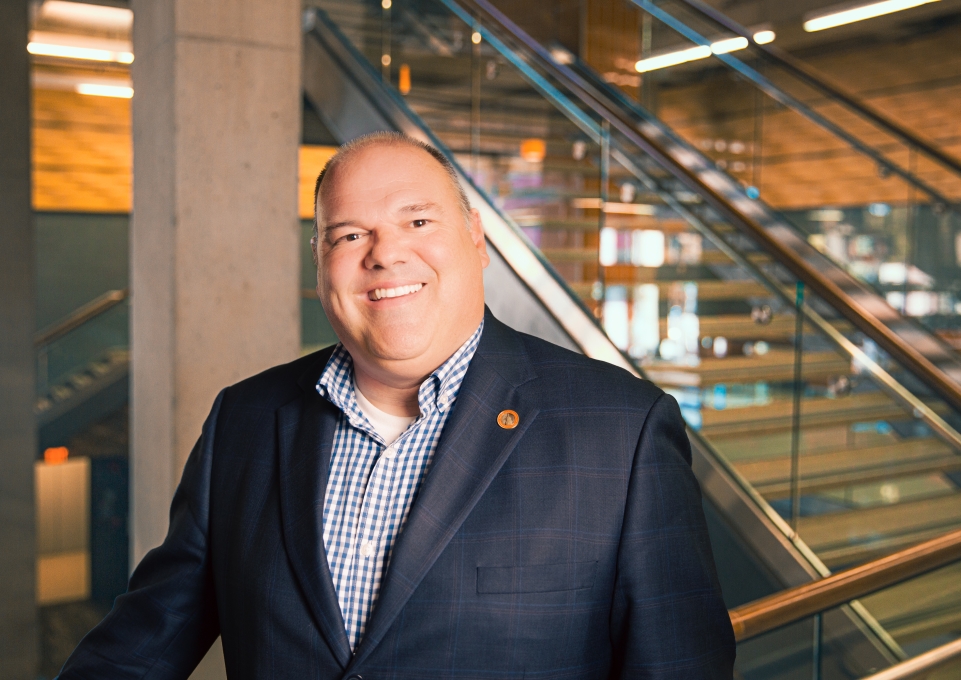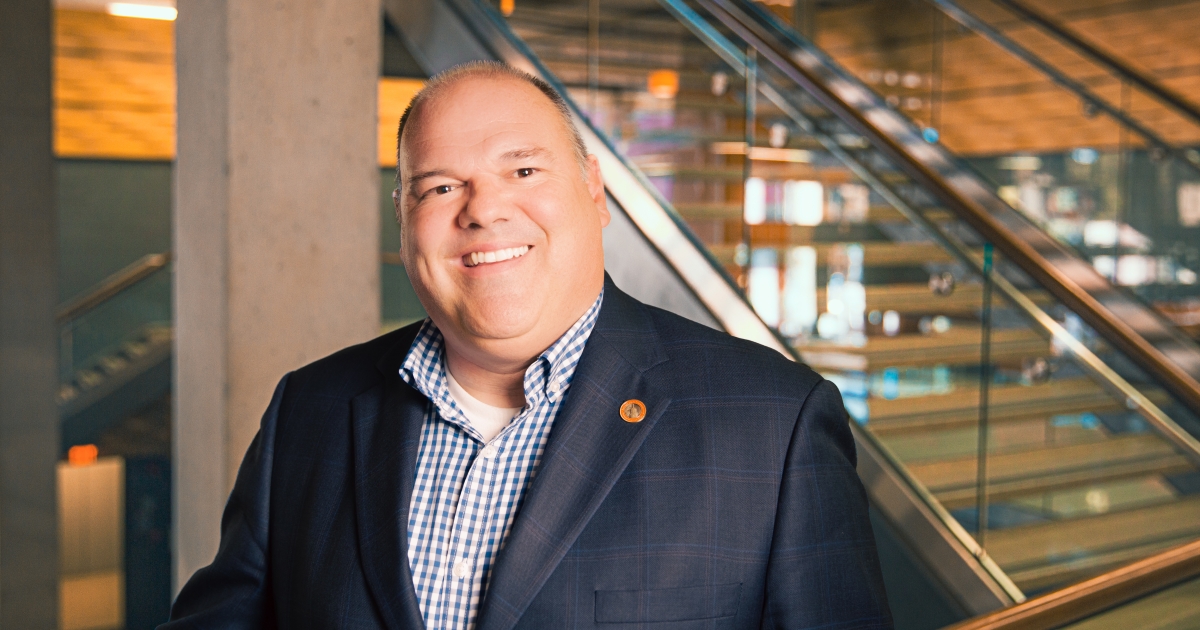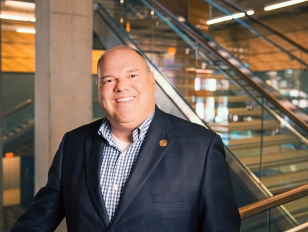
Randyll Bowen, ’99, joined Buffalo State in May as its new vice president for enrollment management, bringing more than 25 years of experience in higher education to the job.
Bowen served for the last two years as the vice president for enrollment management at Hilbert College in Hamburg, New York. He’s also held the titles of vice president, associate vice president, or assistant vice president for enrollment management at D’Youville, Monroe Community College, Villa Maria College, Niagara County Community College, and Erie Community College. At D’Youville, he also served for two and a half years as vice president for student life and enrollment management, and at NCCC, he also served as vice president for workforce and community development, interim director of the NCCC Foundation Inc., and interim vice president for information technology services. He began his career in admissions at Bryant & Stratton College.
We recently talked to Bowen about his path to higher education and his vision for enrollment management at Buffalo State.

Name: Randyll P. Bowen
Title: Vice President for Enrollment Management
Bowen earned an Ed.D. in organizational leadership from Grand Canyon University in 2018, a master of science in student personnel administration (now higher education and student affairs administration) from Buffalo State in 1999, and a bachelor of science in communication from SUNY Brockport in 1994.
What inspired you to attend Buffalo State as a graduate student?
I knew that to move into higher education administration, I would need a master’s degree. Buffalo State has a well-regarded master’s program in higher ed administration and prides itself on catering to adult learners. Its professors are also practitioners in the field, and they interject their professional experience into classroom discussions. I completed the master’s while working full time at Bryant & Stratton.
Where did you grow up, and what did your parents do for a living?
I grew up in Cohoes, New York, which is just north of Albany. It’s a middle-class community that used to be a mill town. My dad worked in IT as a mainframe operator, and my mom was a paralegal. I was the first person in my family to go to college. Out of four of us kids, only one sister and I attained a college degree.
How did you choose your undergraduate program?
I played three sports in high school—football, basketball, and track and field. I played tight end on the football team and was inducted into my high school’s Hall of Fame, but I wasn’t the best student. I initially considered a broadcasting career and knew I needed a college degree to pursue that. Because my grades weren’t the strongest, my football coach sent a video of my playing to SUNY Brockport, and they brought me under the special talent program. If it weren’t for football, I wouldn’t be sitting here today. One of the biggest things that attracted me to this position at Buffalo State is the transformative education that Buffalo State offers its students. That is what I experienced as an undergraduate. I am a lot like our students who walk around campus every day.
What are some of your biggest takeaways from your career in higher education thus far?
Each institution has its own brand and characteristics that reflect the students it serves. Private schools, in general, are centered on the understanding that every student has a story, that every student matters. I think we’re getting to that understanding in public education, and I think Buffalo State is ahead of the game. I also believe Buffalo State has a definitive space in the higher education community, especially when it comes to social mobility and serving first-generation students. Big or small, public or private, all colleges and universities have the same goal: to produce graduates who become better members of society.
At Hilbert, enrollment increased over the past couple of years. What steps did you take to make that happen?
We did a few things. We worked with organizations such as Say Yes to Education and the Higher Education Opportunity Program (HEOP) to significantly increase first-year enrollment in 2020.
And we collaborated with a third-party marketing firm to rebrand the college for fall 2021. This included a new logo identity and campaign through a variety of focus groups, and alumni and faculty and staff surveys aimed at increasing brand awareness. Our greatest impact was bringing on new athletics programs. I recruited our first football head coach in program history and developed the team’s 2022 schedule.
What are your goals for increasing enrollment at Buffalo State?
Improving our enrollment numbers is not about recruitment but retention. I think we can improve connections among departments and offices to keep students engaged and give them a sense of belonging.
We need to look at college from a student’s perspective and see what barriers they face. This is especially true with first-generation students. We can improve the experience for them from the onboarding process through graduation. We can also build ecosystems of support around students from financial aid to residence life.
I think we need to understand as a campus community that we all play a role in retention and student success. As we move forward, communication among faculty and staff will be vital to our success. Our students need support from the entire campus as they pursue their education here at Buffalo State. I’d like to see us develop more of a team approach.
Top photo by Jesse Steffan-Colucci, college photographer.



